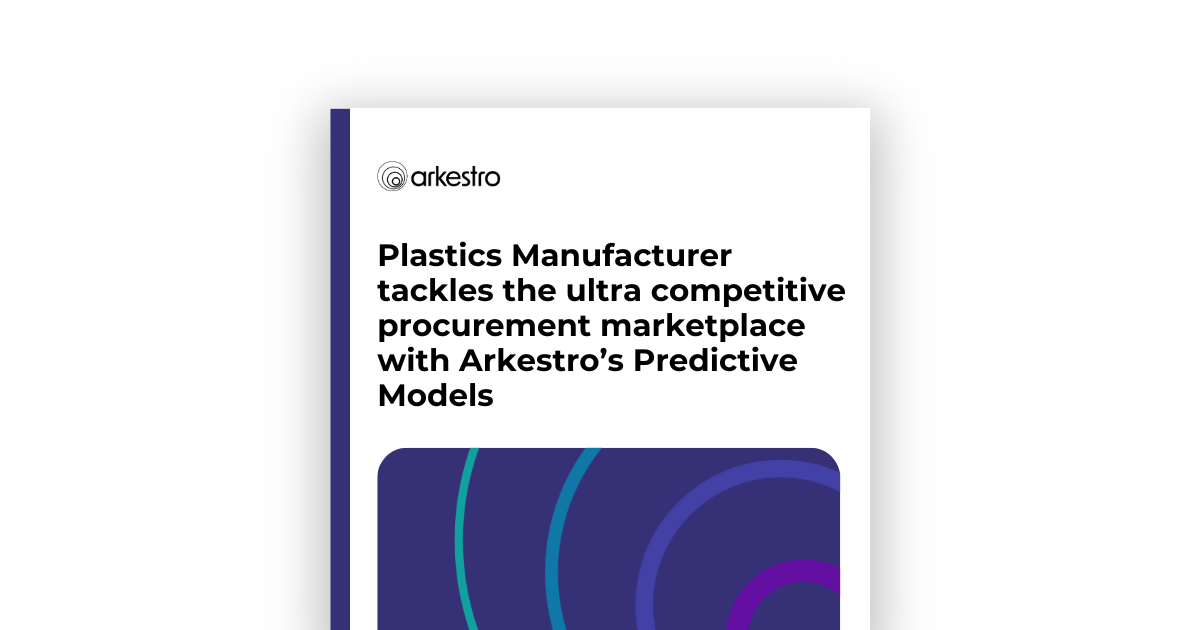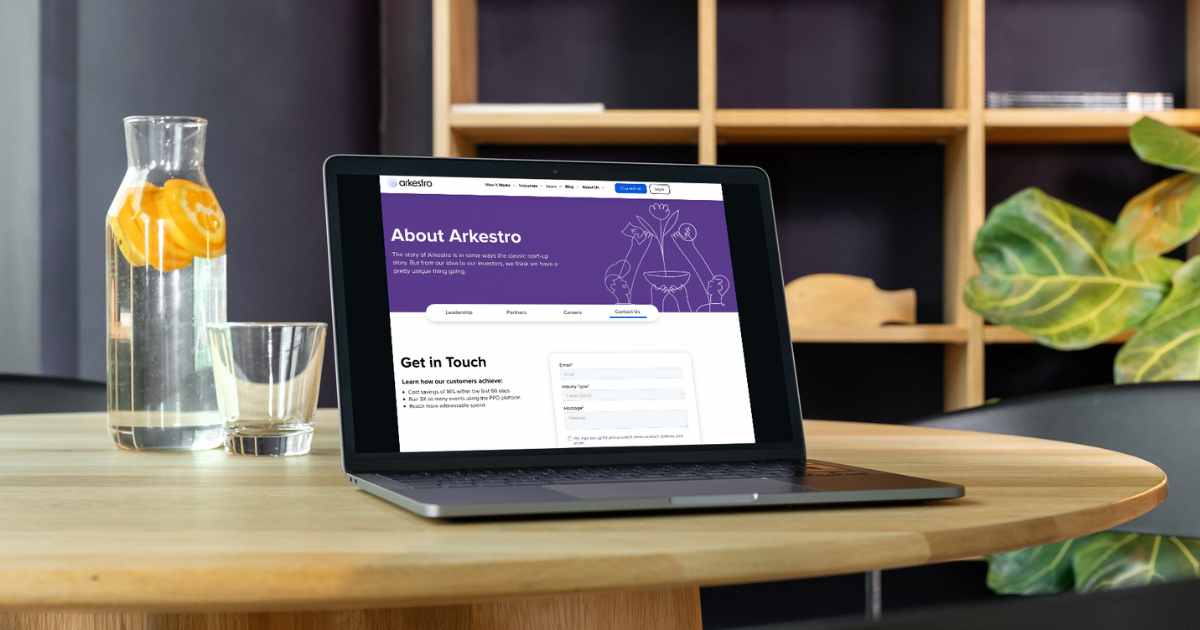Confronting Skepticism: Embracing Predictive Procurement in a Data-Driven World
More than 50% of all organizations have automated their procurement processes, and about 35% use AI for procurement, up 29% from 2020. This industry-disrupting shift allows procurement teams to make better buying decisions, run more events, and reach more addressable spend with the same resources.
Still, skepticism about the benefits of predictive procurement looms. Some procurement professionals are hesitant to embrace the future, fearing that the learning curve for predictive procurement orchestration (PPO) software is too difficult, time-consuming, or costly.
Here, we’re breaking down the myths about PPO once and for all. We’ll highlight five of the most common misconceptions about PPO, along with the facts proving how easy it is for procurement teams to conquer the skepticism to see immediate, scalable, long-term savings.
Myth #1: AI Will Replace Procurement Professionals
Many professionals fear AI is coming for their jobs, and the procurement industry is no different. Fortunately, we can squelch those fears right now. While it’s true that AI can automate many of the manual, repetitive tasks related to procurement, it lacks the human touch necessary for handling more complex aspects of the job.
For instance, AI can streamline and increase efficiencies in procurement activities like data entry and analysis, but it can’t replace your personal excellence of negotiating with suppliers or continuing to build on lasting relationships.
This is why AI should be viewed as a tool that enhances procurement duties rather than completely taking over the job. Procurement professionals who understand how to leverage this tool properly will have more time for activities that add the greatest value to the organization and will spend less time on mundane aspects of the role. Not to mention they will have an advantage over their competitors who choose not to use AI. Procurement’s impact to the business is amplified by AI not replaced.
Myth #2: Predictive Procurement Orchestration Has a Lengthy Implementation Time
Many procurement solutions are difficult to implement, especially for large enterprises with multiple locations and intricate procurement processes. In many circumstances, the greater the need for customization, the greater the timeline for implementation. Extensive data migration, specific business requirements, and user training needs can make implementation periods even longer.
However, Predictive Procurement Orchestration (PPO) is different. Unlike other complex solutions, PPO can be up and running in days — not weeks or months. Better yet, lightning-fast implementation timelines allow for lightning-fast cost savings timelines.
When a global contract manufacturer implemented PPO, it experienced 18% savings in its first event with an incumbent supplier within 72 hours. That’s not a typo, 72 HOURS! The company’s Chief Supply Chain executive, said the fast results melted away his initial apprehensions.
“When I saw how easy it was for our suppliers and how fast it created a business impact, going predictive … became a no-brainer.” Now the company has saved $3.5 million to date, and the savings keep coming.
Myth #3: It Takes Years to See Clear ROI
When it comes to new procurement processes, it can often take months or years to see a clear return on investment. Many procurement initiatives require extensive change management efforts, slow data gathering and analysis, and complexity at scale. Market dynamics and organizational culture can also make it difficult to pinpoint ROI.
But here’s the good news about PPO: it’s not uncommon for procurement teams to see significant savings in as little as 60 days. When those results compound over time, the ROI is undeniable.
Mike Novello, VP of Global Supply Chain at Koch Industries states, “With Arkestro, we were able to transform single source spot buys to multi-supplier, multi-round events in the same amount of time by leveraging Buyer hands-free autonomous negotiation. The results yielded material value, including new suppliers that performed better not just on price but on other value indicators. We achieved significant positive results at scale, thanks to Arkestro.”

In the case of Dover Chemical Corporation, the company has achieved 12% savings year after year. Predictive procurement made it easy to analyze and scrub 1-2 years of data, without the need for manual data entry.
Dover Chemical buyer Patti DeVault said she dreaded using PPO when the company’s CFO first implemented the tool, but she quickly changed her tune. Fast-forward a few years, and the company has now run over 1,000 Arkestro-powered events. DeVault now uses PPO for anything and everything she can.
“Arkestro (PPO) is not a stagnant platform where you see no growth,” said DeVault. “We’ve continued to grow and make the platform work for us, and we gain more savings by using it.”
Maybe you are already hitting your goals and feel that you don’t need new technology to help. Arkestro has an average 12-month rolling savings of 16% for our customers while significantly increasing efficiency. Think of what you can invest back into your company with those significant savings and time back.
Subscribe to news from Arkestro.
No spam, just relevant procurement news and tips. You can unsubscribe at any time.
Myth #4: You Already Have an ERP – You Don’t Need Another Platform
The procurement software adoption rate has doubled in the last five years. While this trend benefits organizations overall, it also means many procurement teams are tired of learning new interfaces and processes. They’re fatigued by just the thought of trying to align yet another procurement platform with their existing systems.
Fortunately, PPO platforms can integrate with any third-party or custom data source, including your existing ERP. The process is seamless and intuitive, complementing your current software and enhancing decision-making across the organization.
PPO allows procurement teams to run three times as many events and reach more addressable spend without increasing headcount. It gives teams more time for strategic activities while reducing time spent on low-value activities. In short, it’s not “just another platform” — it’s an investment that helps teams make their best buying decisions, faster and at scale.
While it can be difficult to change your perception after experiencing outdated procurement technologies, you owe it to yourself to witness the capabilities of emerging technology.
Myth #5: Suppliers Don’t Want to Learn Yet Another Tool
Like procurement professionals, suppliers have been inundated with new procurement software solutions over the past few years. Because of this, some suppliers may grumble about the learning curve that comes with a new program. They may have concerns about integrating new software with existing systems, or they may fear the disruption to their current processes.
But PPO isn’t just another tool that complicates a supplier’s workflow. With its dynamic supplier feedback, transparent communication, and incredible ease of use, PPO actually empowers suppliers to compete for more business. What’s not to love about that?
It may be easier to stick to the status quo, but once suppliers see the intuitive process, easy integration, and clear benefits of PPO, they’ll be glad to have another tool in their belt. Procurement teams that communicate these benefits will quickly see suppliers enthusiastically jump on board with the change.
Overcome Skepticism with Arkestro
Hesitation, concern, and anxiety about the unknown are inevitable. But as the procurement industry evolves, only those who overcome skepticism about new technologies will continue to thrive.
Procurement teams all over the world are already harnessing the power of PPO. They’re overcoming their initial fears and quickly discovering the incredible cost savings and short implementation time that come with the change. They’re realizing how much their suppliers like using the platform, how easy it is to learn, and how significant the return on investment can be.
Don’t stand by while your competitors enjoy the benefits of PPO. Get in touch with Arkestro today to learn for yourself how PPO can help you cut costs, scale your influence, and gain speed with confidence.
FAQs
Busting PPO Myths
-
Will AI replace procurement professionals?
No, AI is a tool to enhance your work. It automates repetitive tasks like data entry, freeing you to focus on strategic activities like supplier negotiations.
-
Is PPO implementation time-consuming?
Unlike other solutions, PPO can be up and running in days. Some companies see cost savings within 72 hours!
-
How long does it take to see ROI with PPO?
It’s not uncommon to see significant savings in 60 days. Arkestro customers achieve an average 12-month rolling savings of 16%.
-
I already have an ERP, do I need another platform?
PPO integrates seamlessly with your existing ERP and other data sources. It complements your current software, not replaces it. PPO allows you to run more sourcing events and reach more spend.
-
What about supplier concerns with PPO?
PPO is user-friendly and empowers suppliers to compete for more business. The easy integration and clear benefits make them happy to participate.
Ready to overcome skepticism and embrace PPO?
Contact Arkestro today and see how PPO can help you cut costs, boost efficiency, and gain a competitive edge.


